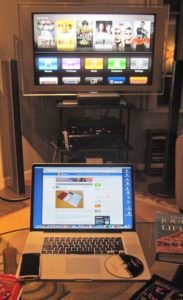

Figure 7.1 How many technologies can you identify in this home entertainment system? Image: Tony Bates, 2014

7.1 Defining the role of technology in education
Even an electronics engineer will be hard pressed to identify all the technologies in the photo of a not untypical home entertainment system in a North American home in 2014. The answer will depend on what you mean by technology:
- hardware? (e.g. TV monitor, laptop computer)
- software? (e.g. computer operating system, channel selection)
- networks? (e.g. Internet, cable)
- services? (e.g. television, telephone)
The answer of course is all these, plus the systems that enable everything to be integrated. Indeed, the technologies represented in just this one photograph are too many to list (although I make an attempt in the feedback on Activity 7.1 at the end of the book. Nevertheless it is a futile exercise as I was forced to change the whole system a couple of years later due to technological ‘upgrades’ by the service provider.)
In a digital age we are immersed in technology. Education, although often a laggard in technology adoption, is nevertheless no exception today. Yet learning is also a fundamental human activity that can function quite well (some would say better) without any technological intervention. So in an age immersed in technology, what is its role in education? What are the strengths (or affordances) and what are the limitations of technology in education? When should we use technology, and which technologies should we use for what purposes?
7.2 The need for decision models
The aim of this and the next two chapters is to provide some frameworks or models for decision-making that are both soundly based on theory and research and are also pragmatic within the context of education. This will not be an easy exercise. There are deep philosophical, technical and pragmatic challenges in trying to provide a model or set of models flexible but practical enough to handle the complexity.
For instance, theories and beliefs about education will influence strongly the choice and use of different technologies. On the technical side, it is becoming increasingly difficult to classify or categorize technologies, not just because they are changing so quickly, but also because technologies have many different qualities and affordances that change according to the contexts in which they are used. On the pragmatic side, it would be a mistake to focus solely on the pedagogical characteristics of technologies. There are social, organizational, cost and accessibility issues also to be considered.
The selection and use of technologies for teaching and learning is driven as much by context and values and beliefs as by hard scientific evidence or rigorous theory. So there will not be one ‘best’ framework or model. On the other hand, given the rapidly escalating range of technologies, educators are increasingly caught between technological determinism (inappropriate applications of artificial intelligence, for instance)or the total rejection of technology for teaching because it is so complex.Thus we need some models to guide their selection and use.
We shall also see though that even with such models or frameworks for decision-making, there are in fact still some fundamental, unanswered questions regarding the use of technology for teaching, including:
- what is best done face-to-face and what online, and in what contexts?
- what is the role of the human teacher, and can/should/will the human teacher be replaced by technology?
Nevertheless, if we consider a teacher facing a group of students and a curriculum to teach, or a learner seeking to develop their own learning, there is need for practical guidance now about when to use one technology or another. In this and the next two chapters I will provide some theoretical models or frameworks that will enable such questions to be answered effectively and pragmatically so that the learning experience is optimized.
In the meantime let’s start with what your views are at the moment about choosing technology for teaching and learning.
Activity 6.1 How do you currently make decisions about what technology to use for teaching?
1. How do you decide at the moment about what technologies to use for teaching?
- Use what’s in the room?
- Ask the IT support people?
- Use a theory or set of principles for making such a decision? If so, what are these?
2. Is justifying your use of technology (or lack of it) in teaching easy to do? What are the reasons for your answer?
3. How many technologies can you see in Figure 7.1? List them
For my answer to question 3, see Feedback on Activity 7.1 at the end of the book. There is no feedback on questions 1 and 2.



